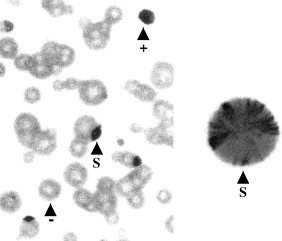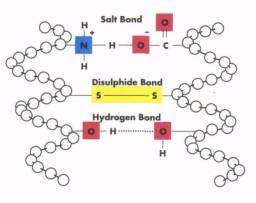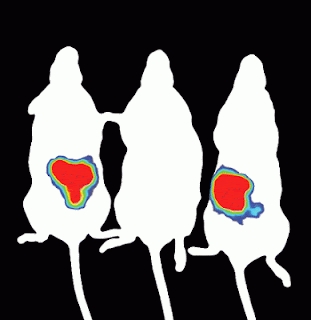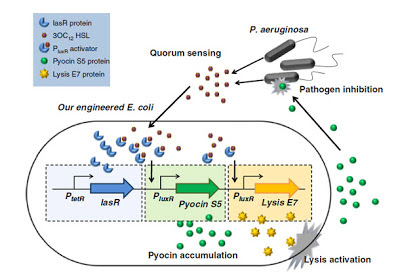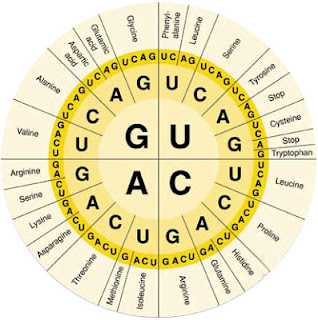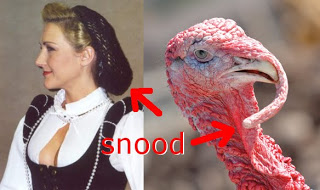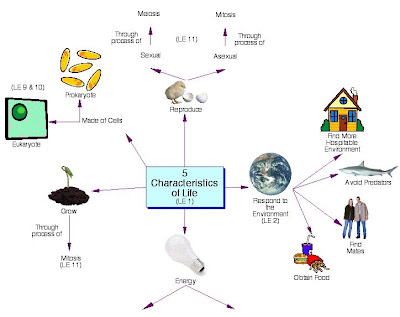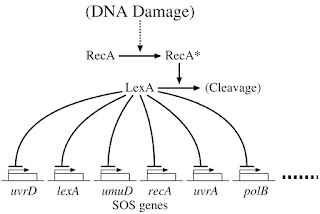Biology concepts – immune defense, antibiotic resistance
Therewas a small Turkish weightlifter a few years back whose nickname was “Pocket Hercules.” He won gold medals in three separate Olympics and was the one the best examples of big things in little packages. Last week we talked about the immune systems of vertebrates, invertebrates and plants, now let’s talk about the defenses of the smallest organisms – bacteria are the Pocket Hercules of biology.
Do bacteria have defense mechanisms? You bet – they get attacked all the time. For bacteria that stray into or purposefully target animal or plant hosts, the perils are many and varied. Antimicrobial peptides try to burst them, antibodies try to bind them up and point them out to killer cells. Macrophages and other phagocytic cells try to eat them or wall them off from the other host cells. Organisms will even sacrifice their own cells just to make sure they kill the bacteria. It’s a jungle out there.
We don’t have the time nor the room to go into the thousands of ways that bacteria protect themselves from plant, invertebrate, and vertebrate immune attack, but we can give a few examples, like deception. Mimicry is when a bacterial antigen looks much like one of our molecules, so that the body is either fooled into not attacking, or tempers its attack.
Other bacteria change their clothes to remain hidden. Just when an immune system sees it and starts the attack, Neisseria gonorrhoeae changes its surface molecules and becomes invisible again. On the other hand, Yersiniapestis remains invisible by living inside macrophages.
Some bacteria stunt our antibody response. The best way to keep from being attacked is to not allow the host to recognize and identify you. The bacteria that cause TB inhibit our immune system from producing specific antibodies.
Some bacteria stunt our antibody response. The best way to keep from being attacked is to not allow the host to recognize and identify you. The bacteria that cause TB inhibit our immune system from producing specific antibodies.
The defense is a good offense, so some bacteria attack. Pseudomonas strains kill the phagocytic cells that would try to eat them by releasing chemicals called aggressins. Staphylococcus aureus just confuses the phagocytes, producing toxins that stop their movement or make them move erratically.
These are but a few of the many bacterial defenses against our immune system. But they have evolved defenses against other threats as well, like our attempts to kill them with antibiotics.
These are but a few of the many bacterial defenses against our immune system. But they have evolved defenses against other threats as well, like our attempts to kill them with antibiotics.
We talked earlier about multidrug efflux pumps in bacteria that pump out the antibiotics with which we try to kill them. This is related to the stories in the media about antibiotic resistance in bacterial pathogens, but classic antibiotic resistance genes are often plasmid based defenses,as we have discussed. Recently, an additional defense against antibiotics has been recognized.
It seems most bacteria produce hydrogen sulfide (H2S, smells like rotten eggs), which was previously thought to be only a metabolic byproduct. A late 2011 studyshows that H2S is part of an integrated defense system used by almost all bacteria. The gas works to prevent oxidative damage. This is not unheard of since a few bacteria produce nitric oxide to do the same thing, but it is being recognized now that oxidative stress induction is a big part of how many antibiotics work. When the H2S system was turned off in several pathogens, they became much more sensitive to antibiotics. Maybe this a lesson we can exploit in the future.
In addition to our attempts to kill them, the universe itself is a tough place to survive if you are a bacterium. They may end up in bright sunlight for long periods of time, or hurtling through space on a rocket or meteor. Bacteria have ways to protect themselves here as well. Ultraviolet radiation from the sun is a mutagen (causes mutations in DNA), but it also can break down cellular molecules to release oxygen radicals, like hydrogen peroxide or superoxide.
It has been known since the 1950’s that pyruvate and catalase, as well as the newly discovered H2S discussed above, do some work in protecting the cell against oxidative damage, but a 2009 study described a whole new mechanism. It seems that E. coli has two proteins that seek out, identify, and repair oxygen radical-mediated damage to sulphur-containing cysteine amino acids within proteins.
Cysteine is the most reactive of the 20 common amino acids, which means that it are often located in the functional site of enzymes (where the enzyme reacts with the substrate). However, this reactivity also makes cysteine vulnerable to reaction with radicals, especially oxygen radicals, after which it becomes modified and non-functional.
To prevent this radical-mediated damage, cysteines often occur in pairs, where links between the sulphurs of the two cysteines help to prevent oxidation (called disulfide bonds, they also serve to link peptides together and give proteins their proper form). A 2008 study showed that this mechanism provides unusual oxidative stability to a cysteine-containing enzyme of the bacterium, Desulfovibrio africanus.
But there are exceptions; lone cysteines do occur, and these are the cysteines most vulnerable to oxidative damage. The DsbG and DsbC proteins of E. coli patrol the cytoplasm looking for oxidized cysteines to fix.
Here is how ingenious the system is – oxidizing a cysteine may or may not unfold the protein, so DSbG is charged and can interact with the still-folded proteins to correct the cysteine problem, but DsbC is uncharged, so it works better with proteins that have been unfolded. Amazing - and bacteria developed it all on their own – well, with the help of the evolutionary pressure of things trying to kill them.
I mentioned that radiation is also a DNA mutagen. The mutagenic properties of radiation affect bacteria just like they affect us; it is just that some bacteria can protect themselves better once their DNA is damaged. Follow me closely here - by using protein repair and protection systems, bacteria like E. coli, with its DsbG and C enzymes, can keep protein functions going when other organisms would break down and die. Some of these protein functions include DNA repair after mutagenesis. So - some bacteria don’t survive radiation because they protect their DNA better, they survive because they repair the damage better.
Other bacteria have a different mechanism to maintain protein function. According to a 2010 study, a shield of manganese metal atoms and phosphates was found in D. radiodurans. It had been long known that manganese was present in very high levels in bacteria that are most resistant to radiation, but its function was unknown.
The recent study shows that these manganese complexes work together to protect proteins from radiation damage, but not DNA. The key for this system is to keep proteins functioning, which can then repair any radiation damage to the DNA. This mechanism allows D. radiodurans to withstand prolonged radiation that is 1000x stronger than that which would kill a human.
So, bacteria have defenses against immune and environmental attacks. Does anything else attack bacteria? How about other bacteria - it’s dog eat dog out there, competition for resources is brutal. Many bacteria have poisons (bacteriocins) that inhibit or kill bacteria that are distantly related (because related types of bacteria are likely to be in the same places looking for the same food).
One type of bacteriocin are the lantibiotics. These protein toxins contain a nonstandard amino acid, called lanthionine. We mentioned above that cysteines are very reactive; lanthionine is a modified circular (polycylic) cysteine that gives the toxin its reactivity. And because it is cyclic, it is much less vulnerable to oxidative damage itself – funny how bacteria seem to cover their bases so well.
A recent discovery illustrates just how bacteriocins are delivered to the target organism. It seems that bacteria can build a spike and a spike launching system anywhere on their cell membrane. The spike is spring loaded in a tube just 80 atoms long, and is fired at the target cell. Then the bacteriocin is released at the end of the spike to do its damage.
The release of toxin was already known, called a type IV secretion system, but the CalTech study that identified the spring-loaded spike as the delivery system is very new. Once fired, the whole system is broken down, ready to be rebuilt somewhere else in the cell. Amazing. (click for video)
Of course, for every punch there is an evolutionary counterpunch, so there are bacteriocin resistance mechanisms as well. Nisin, a bacteriocin active against strains of listeria, is approved as a food preservative. But listeria can spontaneously develop resistance to nisin. It appears that some strains change their membrane chemistry in order to render nisin ineffective. Therefore resistance could be a problem if we pursue the use of bacteriocins as antibiotics; we might end up back in the same situation that we're in now.
Regardless of this possible downside, scientists have found a way to bring bacteriocins into the battle against antibiotic resistance. An E. coli has been engineered to contain the gene for pyocin, a bacteriocin that kills strains of Pseudomonas bacteria. E.coliand Pseudomonas are not closely related, so E. coli would not naturally possess this toxin, scientists added the gene to the E. coli.
When the engineered bacteria encounters Pseudomonas, it does two things; it produces the pyocin toxin to kill the target cell, and the engineered E. coli commits suicide. No release system has been engineered into the E. coli, so the only way they get the pyocin to the target is to have the E. coli produce a lysin that destroys its own cell membrane.
This suicide accomplishes two things, it releases the pyocin to kill the target, and it prevents the engineered E. coli from hanging around forever, possibly trading genes with other bacteria or causing havoc in some unforeseen way.
So it looks like bacteria have it made. They can resist immune system attacks, some can resist environmental onslaughts, they even have ways to protect themselves against competition and threats from other bacteria. No wonder they have always been the predominate life form on Earth. But bacteria do have foes of considerable power – veritable “Micro-Hercules” – we will meet them after Thanksgiving.
Let’s take a couple weeks to talk about the biology of turkeys and the so-called “tryptophan nap.”
For more information or classroom activities, see:
Bacterial defenses–
Bacteriocins –
see Pubmed (http://www.ncbi.nlm.nih.gov/pubmed) for more information on these defenses.

